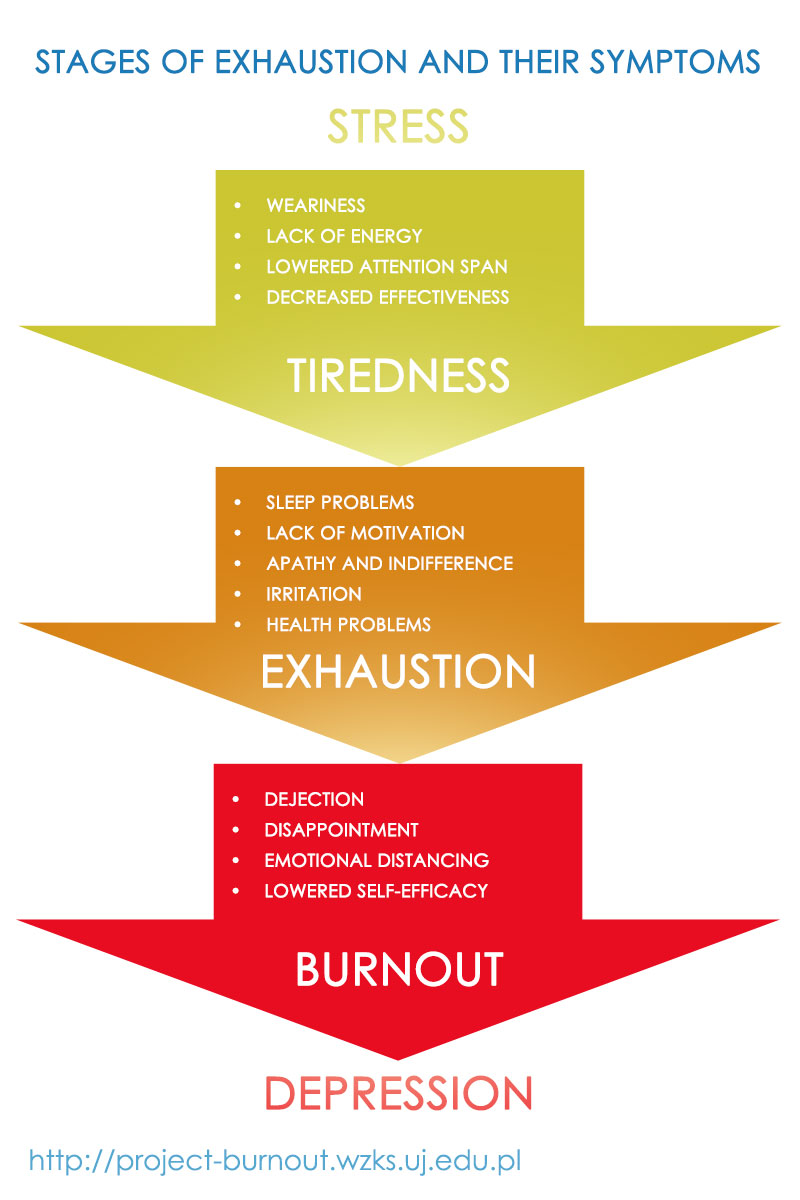
Rat race, overwhelming competition, technological advancement, information overload – all these things cause mental distress for the professionally active. Is it inevitable for all of us? How do we recognise the first signs of burnout? And how does the environment we work in affect our cognitive and emotional well-being?
Uncomfortable working conditions and prolonged stress are known to cause feelings of discomfort and discouragement, and in the long run can also be the root of mental diseases (such as depression). Burnout is one of the consequences of increased work-related demands and obligations. It’s not related to the size of a business or organisation, as it’s been observed in employees of both large corporations and small companies. Burnout is considered to be a growing problem around the world.
Burnout: a disease of affluence
 The term ‘burnout’ was coined in the 1970s in the United States. The condition was first described by psychiatrist Herbert Freudenberg and social psychologist Christina Maslach. The former performed a study on a group of volunteers working in a drug rehabilitation centre who experienced a gradual decline in motivation, energy, and commitment, and started showing symptoms of psychosomatic disorders. The latter took a closer look at people working stressful jobs involving a lot of human contact (e.g. social workers, doctors, nurses, therapists). Her research allowed her to define burnout as ‘psychological syndrome involving emotional exhaustion, depersonalisation, and a diminished sense of personal accomplishment that occurred among various professionals who work with other people in challenging situations’.
The term ‘burnout’ was coined in the 1970s in the United States. The condition was first described by psychiatrist Herbert Freudenberg and social psychologist Christina Maslach. The former performed a study on a group of volunteers working in a drug rehabilitation centre who experienced a gradual decline in motivation, energy, and commitment, and started showing symptoms of psychosomatic disorders. The latter took a closer look at people working stressful jobs involving a lot of human contact (e.g. social workers, doctors, nurses, therapists). Her research allowed her to define burnout as ‘psychological syndrome involving emotional exhaustion, depersonalisation, and a diminished sense of personal accomplishment that occurred among various professionals who work with other people in challenging situations’.
The issue of burnout was recognised in Poland in the late 1980s. In 1990, an international conference on this subject was organised at the Jagiellonian University by Prof. Tadeusz Marek from the JU Institute of Applied Psychology. After the conference, Polish researchers intensified their work on burnout, resulting in the book Wypalenie zawodowe. Przyczyny, mechanizmy, zapobieganie [Burnout. Causes, mechanisms, prevention] edited by Helena Sęk.
Burnout may be caused by a variety of reasons. They can be divided into three categories:
- individual reasons, such as dissatisfaction with one’s career progress, feeling underappreciated at work, lack of professional development, unreasonable self-expectations, strong motivation for success, excessive ambition;
- interpersonal reasons, like stressful situations, difficulties in communicating with colleagues and supervisors, conflicts, negative atmosphere at work, lack of mutual trust and support, verbal aggression, mobbing;
- organisational reasons, including uncomfortable working conditions, noise, inadequate or malfunctioning equipment, working on evenings or weekends, ineffective management style, too high or too low expectations, excessive workload, monotony, high levels of stress related to pace of work or hazardous environment, inadequate pay, oppressive supervision and monitoring, red tape, unfair distribution of responsibilities and pay, unclear criteria of rewarding and disciplining employees, questioning staff competencies, inhibiting staff creativity, unstable employment.
Burnout doesn’t only affect the employee, but the employer as well, as the lack of staff commitment may disturb the workings of any company or organisation. Furthermore, burnt out employees leave an impression on other staff and customers, affecting their level of satisfaction and quality of services provided.

The process of burnout
Burnout can happen over a long period of time. It starts with a sense of tedium, weariness, lack of energy, and disinterest. It becomes harder to focus, which effectively lowers work efficiency. Most of these symptoms are easy to overlook or trivialise.
Prolonged weariness leads to exhaustion and sleeping problems (in the form of either sleepiness or insomnia), depleted motivation, apathy, indifference, and overall irritation. It’s often accompanied by a decline in health and aversion to physical activities.
All of the above can quickly lead to dejection, disappointment in private and professional life, and a need to distance oneself from reality. A burnt out person starts to question their skills and the purpose of their work. Burnout leads to an overall decrease in all aspects of life, eventually leading to depression.
What happens in the brain?
To fully describe the phenomenon of burnout, it’s necessary to have look at its consequences. They were investigated by researchers from the JU Institute of Applied Psychology while they were working on Project Burnout.
The psychologists focused chiefly on analysing the impact of excessive workload or mismatch between an individual and their work environment on an employee’s cognition and emotions. They used a non-invasive EEG method to study the neurophysiological aspects of burnout coupled with standard interviews and questionnaires to perform one of the most comprehensive research projects on this condition.
 According to the study, the only differences between the burnt out and the control group could be observed in evoked potentials (i.e. electrical potentials recorded from the nervous system of a human or other animal after the presentation of a stimulus, be it visual, auditory, or olfactory). There were no visible differences when it came to the number of mistakes made or reaction time.
According to the study, the only differences between the burnt out and the control group could be observed in evoked potentials (i.e. electrical potentials recorded from the nervous system of a human or other animal after the presentation of a stimulus, be it visual, auditory, or olfactory). There were no visible differences when it came to the number of mistakes made or reaction time.
As pointed out by the project’s leader, Dr Krystyna Golonka, this means that without psychological and neurophysiological inquiry, it’s often impossible to tell if someone is suffering from burnout or not, as the burnt out continue to be just as effective at their job. Research suggests that they may simply require more energy to attain the same goals, thus aggravating the state of exhaustion.
Preventing burnout
Burnout is a problem for both the employee and the employer. Both of them need to make sure they’re doing everything they can in order to combat it. For employers, that means organising workshops, trainings, and awaydays as well as recognising the potential causes of burnout. Employees, on the other hand, should make sure they find a balance between their private and professional life, eat healthy and sleep well, and enjoy some sort of physical activity or hobby. When it comes to professional development, it’s also important to raise one’s qualifications and improve competencies. Ultimately, both employers and their staff feel the benefits of preventing burnout.
Original text: www.nauka.uj.edu.pl





